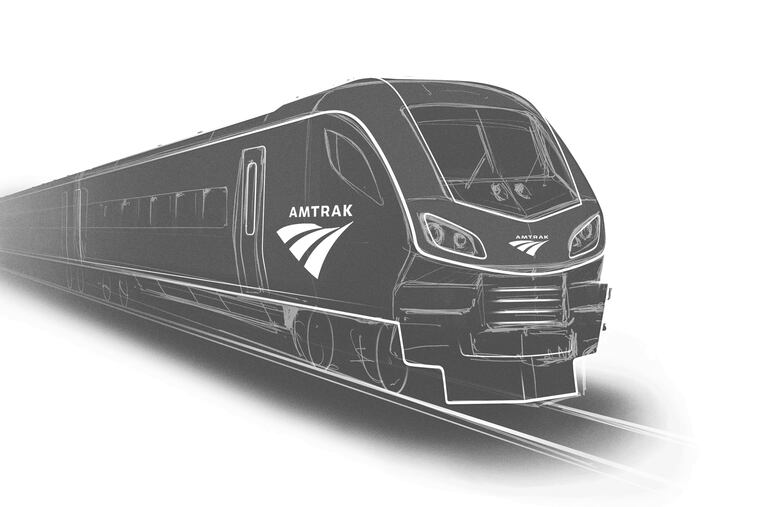Amtrak signs a deal for a new fleet of multi-powered trains to replace 50-year-old rail cars
The oldest cars in Amtrak's fleet would be retired after 50 years of service.

Amtrak is spending $7.3 billion on a new fleet of as many as 83 new train sets to replace its nearly 50-year-old rolling stock on the Northeast Corridor and a number of state-supported routes, including in Pennsylvania, the national passenger railroad announced Wednesday.
Locomotives pulling the trains, to be built by California-based Siemens Mobility under a $3.4 billion contract, will slash air pollution, and the new passenger cars will be loaded with amenities and accessible to people with disabilities.
“We expect this to transform U.S. rail travel,” Hollie Knox, a vice president in major program delivery for Amtrak. “This is one of the largest investments that Amtrak has ever made.”
She said the railroad expects the new fleet will lead to an 85% reduction in emissions of nitrogen oxides, gasses implicated in climate change, and a 95% decrease in particulates, generated by burning fossil fuels and a cause of asthma and other lung illnesses.
Amtrak will begin the project with about $200 million already approved by Congress. Future funding would need approval.
“We expect that we will have annual funding for our portion of the train sets,” Amtrak CEO William Flynn told The Washington Post. “If there should be a moment in time when that money isn’t specifically available, we have the ability to finance the units as well.”
The railroad expects to take delivery of the first rail cars and locomotives capable of running on diesel or electric power where there are overhead wires, in 2024 and to deploy them on its Amtrak Cascades service in the Pacific Northwest, run with the state governments of Oregon and Washington.
In the Northeast and Mid-Atlantic regions, the new trains should begin service in 2025, and the acquisition is expected to be finished by 2031, Knox said.
The last planned delivery: a hybrid battery-diesel train for the Empire Service from New York City through Albany and Buffalo to Niagara Falls; battery power will be used to move into and out of Penn Station in Manhattan.
In addition to the Northeast Corridor, the new trains will be used for two state-supported services in Pennsylvania: the Keystone, between Harrisburg and Philadelphia; and the Pennsylvanian, between Philadelphia and Pittsburgh.
They will replace Amtrak-owned Amfleet and Metroliner cars, some of which date from the railroad’s founding in 1971, as well as state-owned equipment on some routes. Both Amfleets, used on the Northeast Regional line, which stretches from Boston to Washington, and the slightly older Metroliners were built by the Budd Co., based in Philadelphia until it closed in 1987.
Having dual-powered locomotives will shorten the time it takes to transition from electrified into non-electrified territory. Trains traveling south from Washington, for instance, take up to 40 minutes to transition to non-electrified tracks.
Amtrak believes that less need for repairs on the older trains will cut trip times and able it to add more frequent service. Knox said it anticipates gaining an additional 1.5 million passengers a year once the new trains are running.
Cars on those trains will be roomier and more comfortable, with features including individual power outlets, USB ports, onboard Wi-Fi, improved lighting, and panoramic windows. The cars, including vestibules and restrooms, will be accessible to people with disabilities and outfitted with wheelchair lifts.
The railroad also is in the process of replacing its Acela fleet, rolled out in 2000, with 28 high-speed trains from French manufacturer Alstom, in a $2.5 billion program. Those trains are expected to enter service next spring after testing and production delays related to the pandemic.
Siemens will build 73 train sets at its factory in Sacramento, Calif., and will provide support, service and parts for 20 years. Railroad officials said Amtrak has an option to buy 10 more trains from the company for $1.5 billion — and also has the option to order up to 130 of the trains later. It also is spending a little more than $2 billion for modifications to the railroad’s facilities and administrative costs of the replacement program.
This story has been updated to correct the title for Amtrak executive Hollie Knox. She is a vice president in major program delivery.